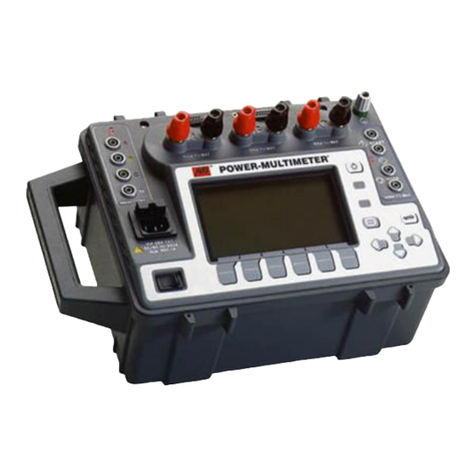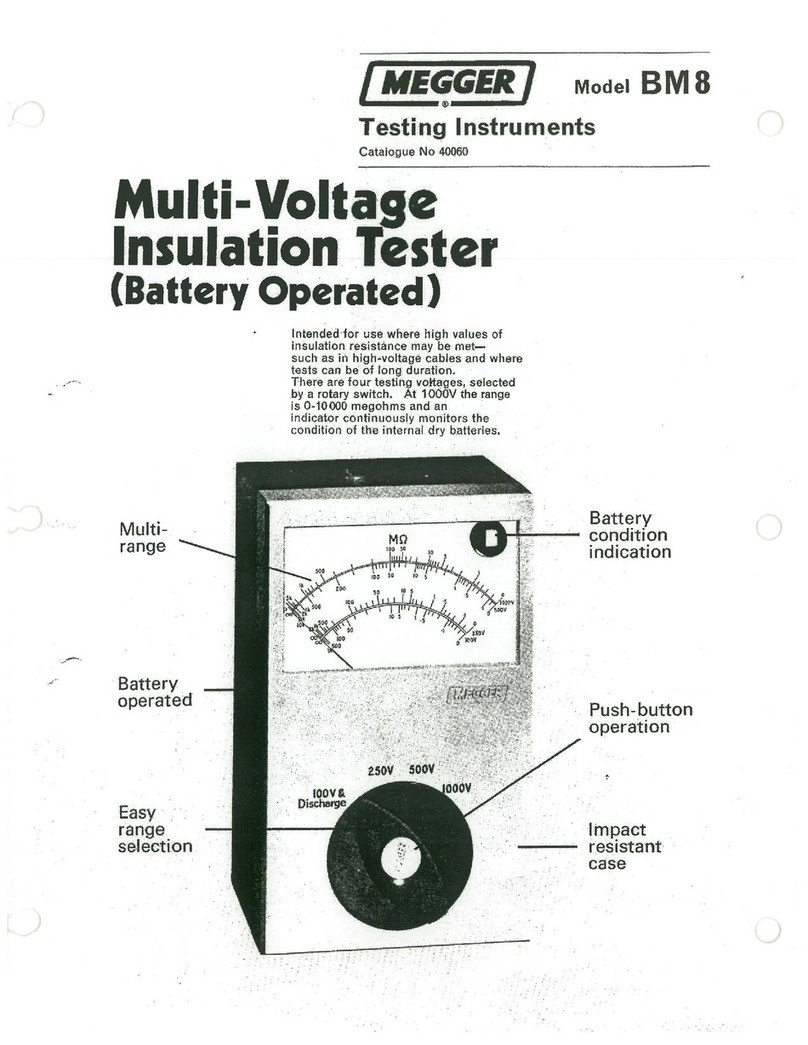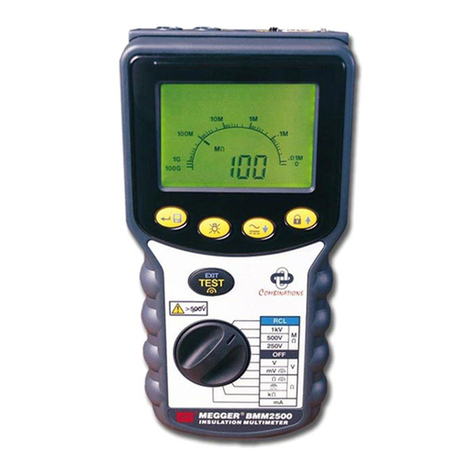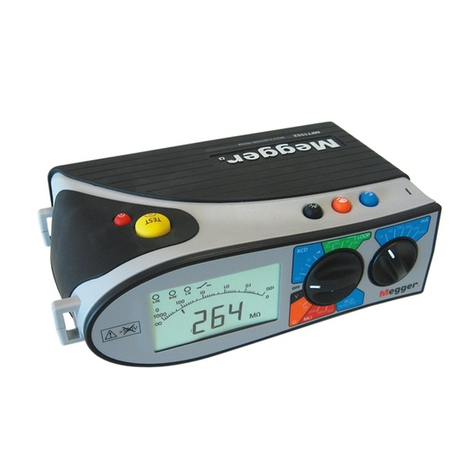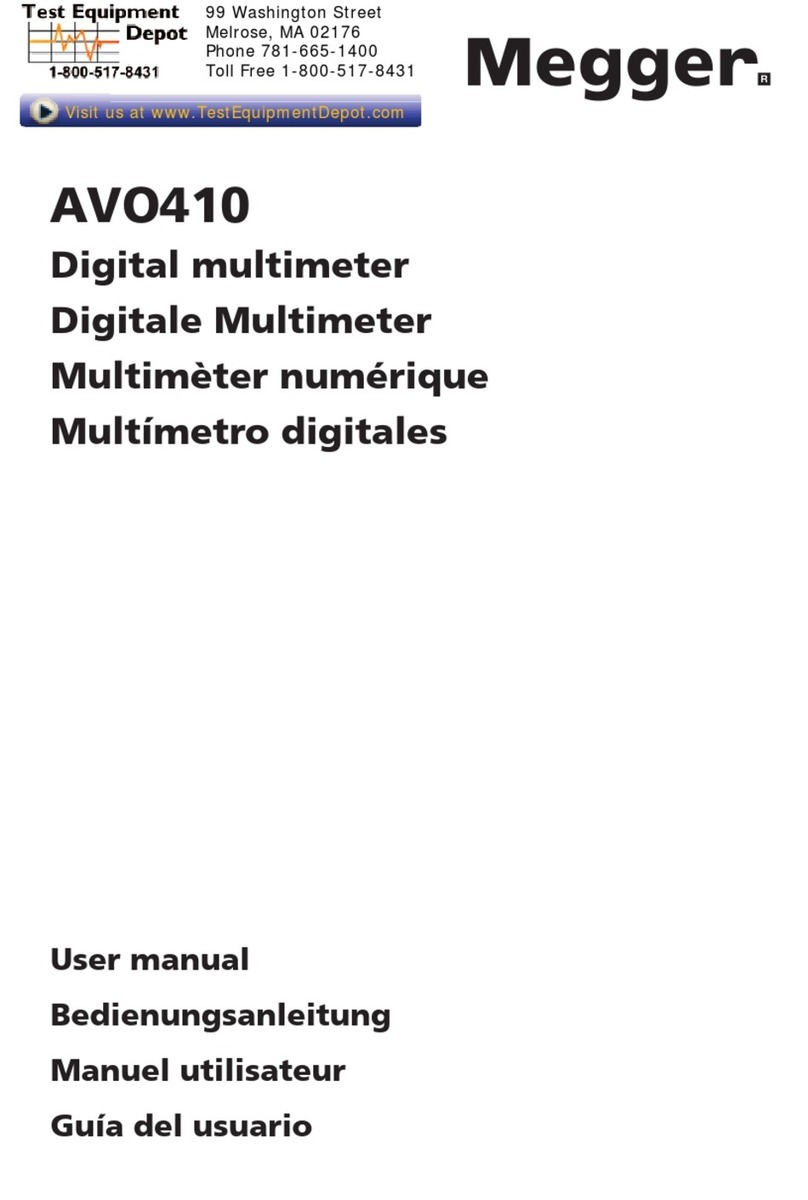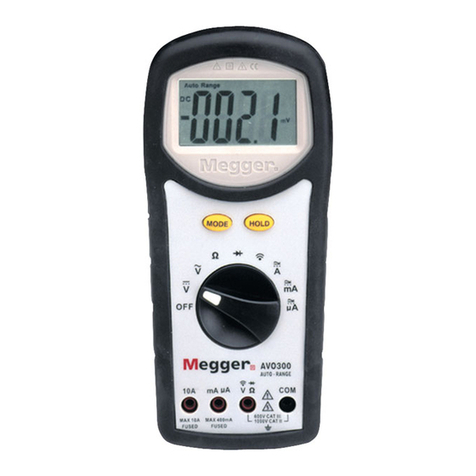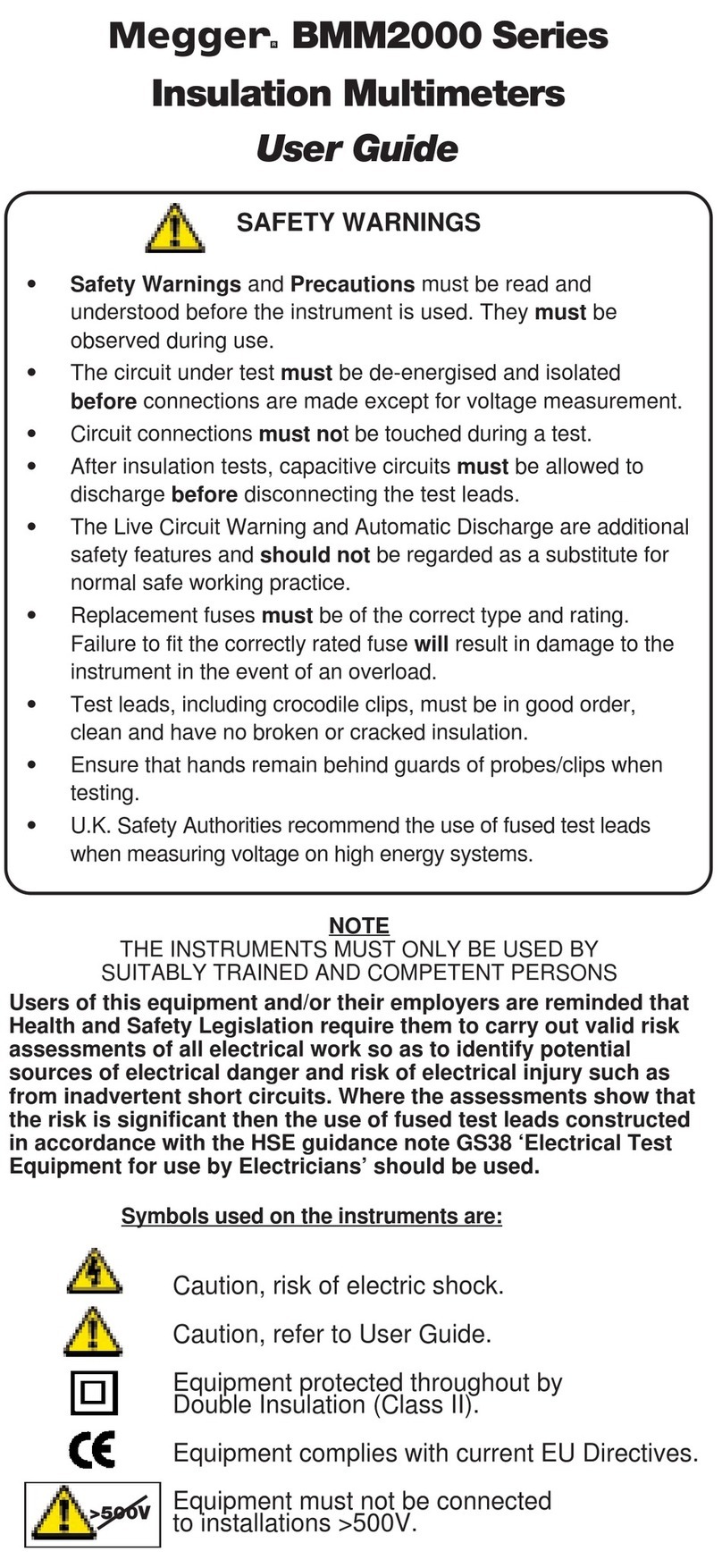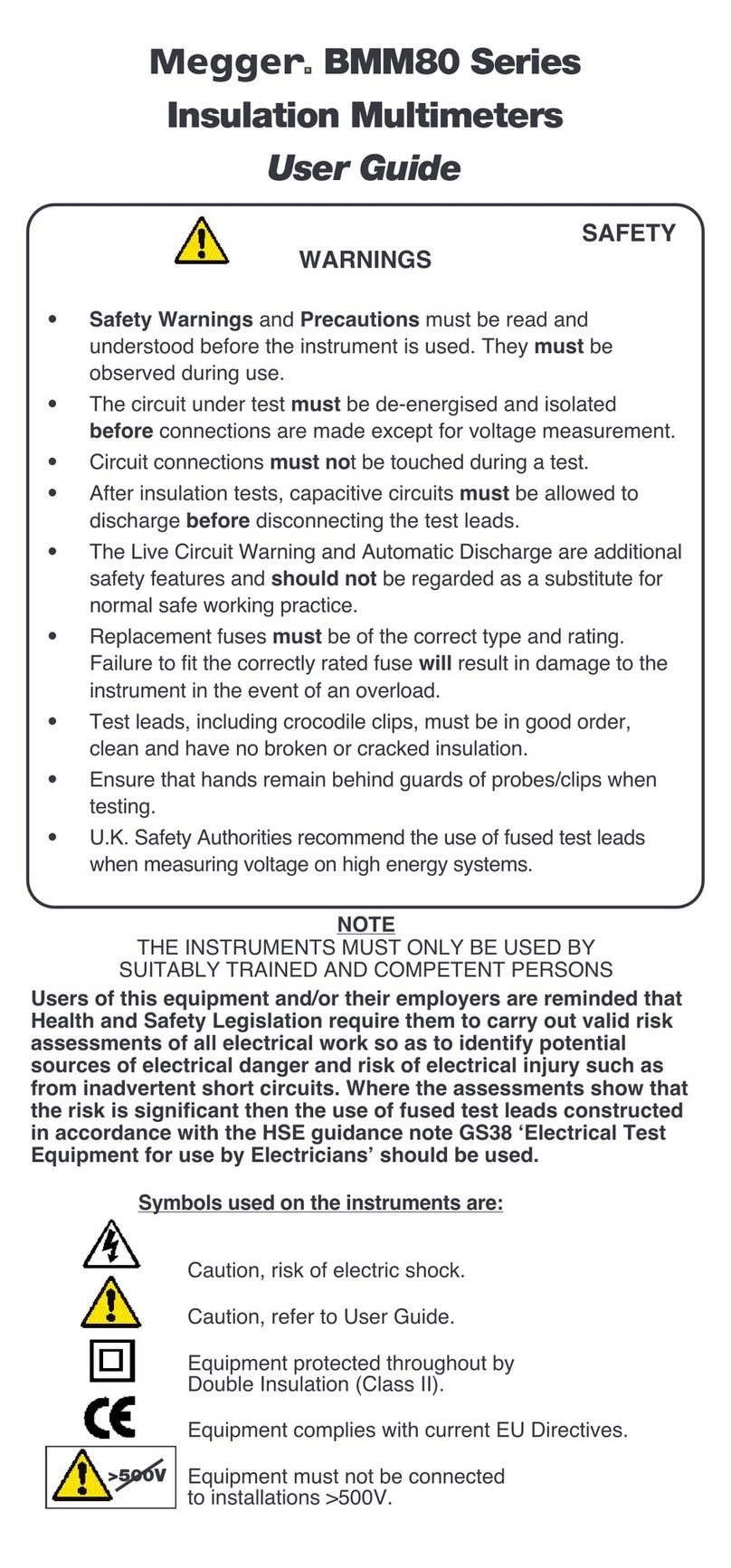5
The M8035 and M8037 are hand-held, battery-
operated professional quality digital multimeters for
today’s complex electrical & electronic system diagnostics
and troubleshooting. The M8037 further offers d.c.+a.c.
true RMS responding with wide a.c. bandwidth for non-
sinusoidal waveform measurements, as well as a back-lit
LCD display for all light condition applications.
The measuring functions include d.c. voltage, a.c.
voltage, d.c.+a.c. voltage (M8037 only), dBm (M8037
only), Adaptor Input, Frequency, Duty Cycle, Resistance,
Conductance, Continuity Test, Capacitance, Diode Test,
d.c. current as well as a.c. current.
Pushbutton functions include 4000 Counts Fast
Measuring mode, 40,000 Counts High Resolution
Measuring mode, Data Hold, Auto or Manual Ranging,
Data Store & Recall, Relative Zero mode, Relative %
Change mode, Relative Per Unit mode, 50ms Record
MAX/MIN/MAX-MIN/AVG, 0,8ms Crest MAX/MIN/MAX-
MIN, Sort™ MAX/MIN/MAX-MIN/AVG, dBm Reference
Impedances Selection (M8037 only) as well as
Secondary Functions Selection.
Power on options include Line Filter Frequency 50/60Hz
Selection for best noise rejection (normally only available
in expensive bench top instruments), Auto Power Off
Disable as well as Beeper Disable.
The instruments are housed inside a gasket sealed heavy
duty casing which keeps out grease, oil, dirt and moisture
to maintain superb accuracy and reliability. The casing is
made of high impact thick wall fire retarded material to
maximize durability of the meter, and safety to the user. In
addition, a sealed battery compartment design keeps
battery leakage contaminants off the PCB. This
effectively reduces the potential short circuit
contamination risks.
This environmental friendly series contains no CFC
ozone depleting substances, and is not manufactured
with such substances.
General Description
